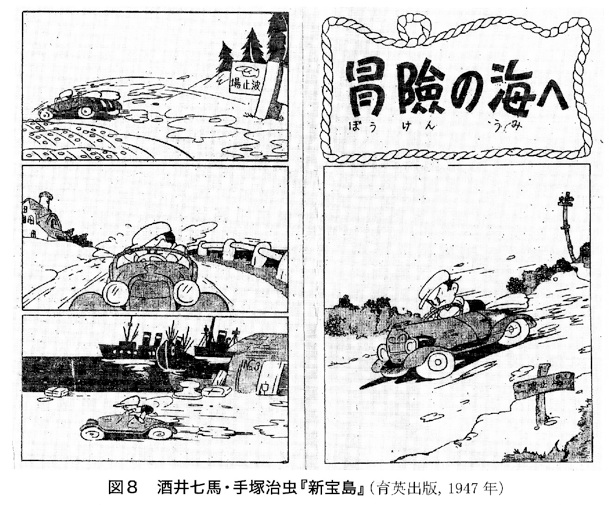Japanese Animation and New Media
Week Thirteen: Chapter Twenty-One: Emergent Positions
Tezuka Osamu is commonly credited with the invention of a stable system of manga expression in postwar Japan. While it is debatable whether we should give so much credit to Tezuka alone, there is no doubt that a fairly stable set of conventions for manga emerged in postwar Japan, around what was called the ‘story manga’ directed at a younger audience. Among the innovations attributed to Tezuka is a cinematic sense of action, and this scene from ‘New Treasure Island’ (Shin-takarajima, 1947) is frequently cited (read right to left).
Note how we see the boy in his car in the manner of a long shot, which emphasizes the direction of movement, and that movement is also reinforced with speed lines. The middle panel on the second page gives us a perception-image, in which the car appearing to be speeding at us, and we seem to be looking at its driver. But this perception is folded back into the overall tendency of the action-image.



